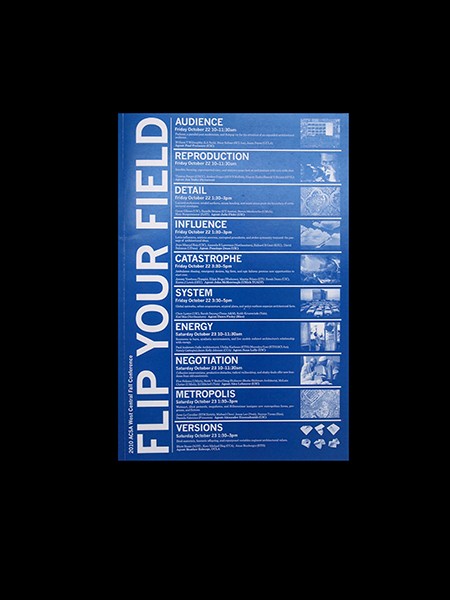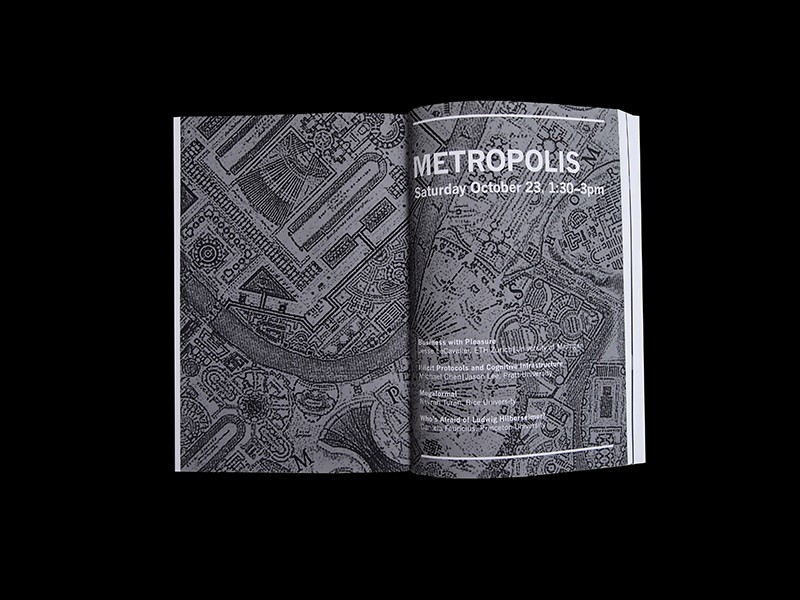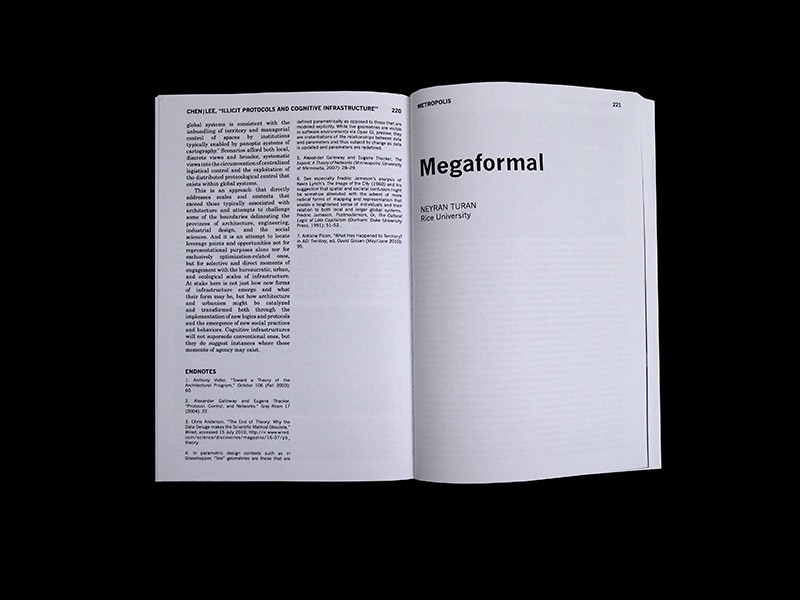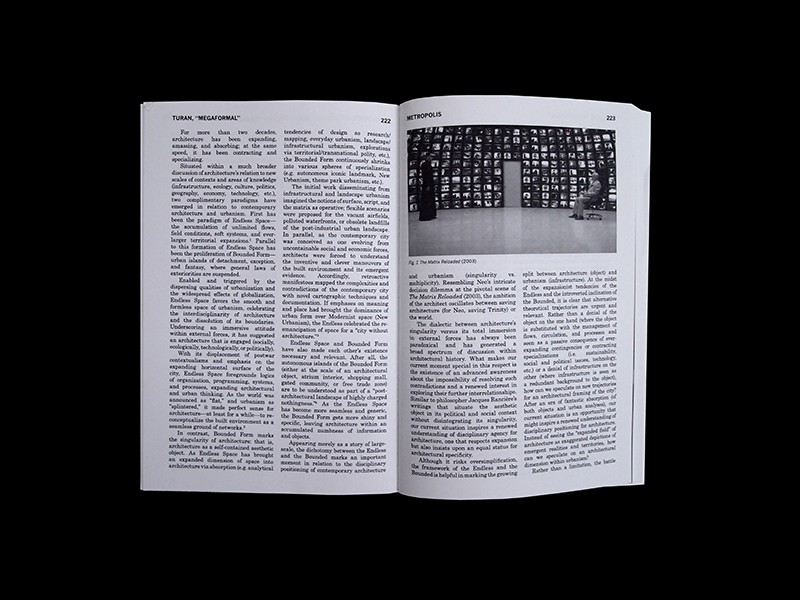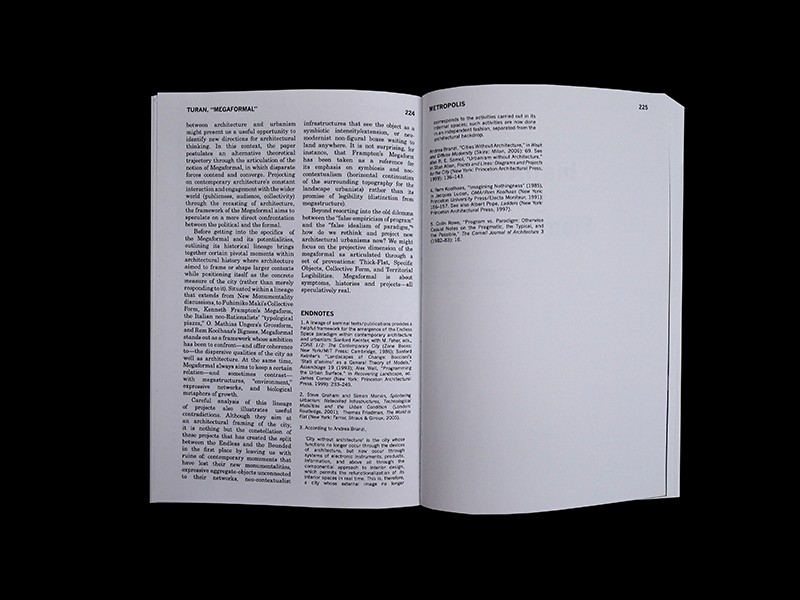For more than two decades, architecture has been expanding, amassing and absorbing; and at the same speed, it has been contracting and specializing. Situated within a much broader discussion of architecture's relation to new scales of contexts and areas of knowledge (infrastructure, ecology, culture, politics, geography, economy, technology, etc.), two complimentary paradigms have emerged in relation to contemporary architecture and urbanism. First has been the paradigm of Endless Space—the accumulation of unlimited flows, field conditions, soft systems, and ever-larger territorial expansions. Parallel to this formation of Endless Space has been the proliferation of Bounded Form—urban islands of detachment, exception and fantasy, where general laws of exteriorities are suspended.
Enabled and triggered by the dispersing qualities of urbanization and the widespread effects of globalization, Endless Space has favored the smooth and formless space of urbanism, celebrating the interdisciplinarity of architecture and the dissolution of its boundaries. Underscoring an immersive attitude within external forces, it has suggested an architecture that is engaged (socially, ecologically, technologically, or politically). With its displacement of postwar contextualisms and emphasis on the expanding horizontal surface of the city, Endless Space foregrounded logics of organization, programming, systems and processes; and expanded architectural and urban thinking…In contrast, the Bounded Form has marked the singularity of architecture: that is, architecture as a self-contained aesthetic object. As Endless Space has brought an expanded dimension of space into architecture via absorption (e.g. analytical tendencies of design as research/mapping, everyday urbanism, landscape/infrastructural urbanism, explorations via territorial/transnational polity etc.), the Bounded Form continuously has shrunk into various spheres of specialization (e.g. autonomous iconic landmark, New Urbanism, theme park urbanism, etc.).
In this context, the paper aims to postulate an alternative theoretical trajectory through the articulation of the Megaformal, in which disparate forces contend and converge. Projecting on contemporary architecture's constant interaction and engagement with the wider world (publicness, audience, collectivity) through the recasting of architecture, the framework of the Megaformal aims to speculate on a more direct confrontation between the political and the aesthetic.
